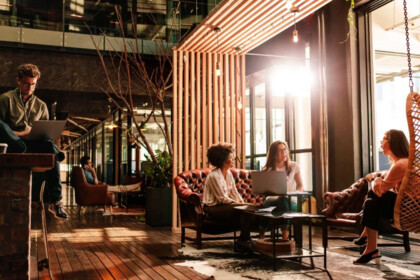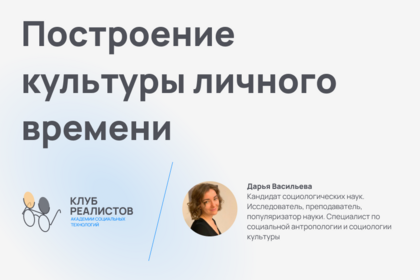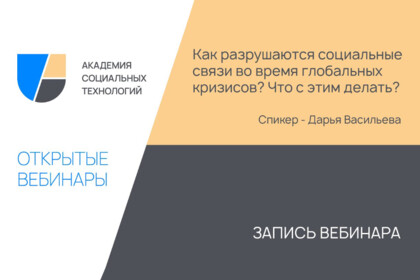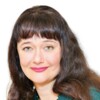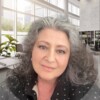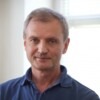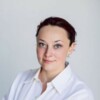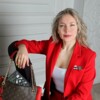Daria Vasileva "Laughter in the context of urban soundscapes" // The European Journal of Humour Research Vol. 9 No. 2 (2021): Laughter and Humour in Communication |


Laughter in the context of urban soundscapes
Daria Vasileva
Saint Petersburg State University, Russia
d.vasilieva@spbu.ru
Abstract
Fifty people compiled diaries in which they described the sounds of their daily life in cities around the world. Of the 940 hours of observation there were 200 entries that referred to sounds of laughter, both live and recorded. The participants of the research always identified laughter sounds explicitly, unlike other urban sounds. The sound of laughter has a powerful cultural-symbolic superstructure. Learning how we use laughter, what we hear and how we react when someone laughs can help us to understand the key processes taking place in the urban space today. Laughter can at once attract and repel, signal danger and relieve social tension. It can lead equally to social agents’ inclusion and exclusion in the situation of interaction, and can largely determine the form and extent of their inclusion. A citizen’s interpretation of the sound of laughter depends directly on the media technologies which predominate in the urban environment and channel their cultural experience and sonic imagination.
Keywords: sounds of laughter, soundscapes, sonic imagination.
1.Introduction
Laughter is considered to be not only something brought about by humour, or an expression of emotion. Hearing laughter triggers the processes of social bonding, agreement and regulation on the one hand, but on the other it may also provoke conflict and separation. Laughter simultaneously embodies destructive and creative sources (Likhachev et al. 1984: 3, 35, 203–204). Research into the role of the sound of laughter in the shaping of space for interaction in a congested, culturally diverse, rapidly changing urban environment filled with strangers aims at gaining a better understanding of contemporary sociocultural processes.
The basic idea of this article is that the sounds of laughter we perceive in urban contexts are indivisibly related to the various social practices which they symbolically represent. Laughter in the city is associated with a complex space of sensory images. The soundscape, as a cultural and symbolic space mediating the perception of urban sounds and noises, has always been discrete and changeable in social, cultural and historical contexts. The characteristics of urban soundscapes, on the one hand, were determined by the features of local infrastructure and the activities of various social agents over time. On the other hand, the “building material” of soundscapes is their agents’ various sonic imaginations arising from their own cultural experience, and from the concentration of global cultural and symbolic flows directed by cultural practices.
In this article, the role of laughter in urban soundscapes will be discussed in the contexts of laughter’s basic social functions in the organisation of cultural diversity and the development of audio-visual technologies as an important factor in the transformation of sensory culture and sensory practices. The thematic framework of this essay relates to three broad, heterogeneous, multidisciplinary research fields: humour-, urban- and sound studies. This article aims to collate ideas from these different interdisciplinary fields, based on analysis of existing written research and on The noise and sounds of the city are a reflection of the social connections, meanings and values that imbue it (Logutov 2017: 47). The hearing and identification of laughter have both a social and spatial character. As with any sense, it contributes to people’s orientation in their living space and inclusion in spatial relationships.
The study of sensuous practices targeted at sounds of laughter involves “interrogating the hierarchies of the bodily senses” (Urry 2000: 79). Our interactions in the urban space, the identification of its objects, contours and boundaries, our sense of control and security are based on multisensory experience. Smells, sounds, tactility play no less important a role than visuality in our everyday life. Nevertheless, from the 17th century to the first half of the 20th century, sensory patterns of perception were gradually becoming asymmetrical. Over the last century, social and media philosophers have spoken about the “hegemony of vision”, which came as a consequence of Gutenberg’s invention of the printing press (McLuhan 1962, Anderson 1983, Urry 2000: 80). Another reason for the supremacy of vision is the development of optics and mirror experiments (Melchior-Bonnet 1992, Urry 2000) which entailed the establishment of a complex visual code. Sounds in the era of the “hegemony of vision” became, if not less significant, then certainly less reflective, controlled, and thus rarely entitled to legitimacy in orderly urban landscapes.
The sensory experience of contemporary existence is a routine process of ordering sensory images from day to day. The increased sociability of European cities, as well as of places where strangers meet strangers, has caused a kind of “prohibition” of smelling, touching, making sound. The sound of laughter has also been stigmatised in specific urban contexts (e.g. public transport spaces, workplaces). The visual sense enables the world of both people and objects to be controlled from afar (Urry 2000: 82). Anything alien and breaking the interaction should be removed from view. Visual and textual humour have taken centre stage. Phenomena such as sarcasm, or the reinforcement of the function of face gestures in face-to-face communication, could be excellent illustrations of tendencies associated with the hegemony of vision.
The agenda for the text which follows is firstly to depict the general historical picture of the impact of audio-visual technologies on the configuration of the urban soundscape in general, and on the perception of laughter in particular. Secondly, based on theoretical analysis and primary field research, the text will identify key hypotheses about the role of the sound of laughter in contemporary urban sociocultural processes.
The method which I have adopted in this research and used as a basis for this paper follows a model similar to that of Jonathan Sterne. It emphasises that in speaking about sonic imaginations we are “fascinated by sound but driven to fashion some new intellectual facility to make sense of some part of the sonic world” (Sterne 2012: 5). This concept occupies an “ambiguous position between sound culture and contemplation outside it” (Sterne 2012: 5). “Sonic imaginations” appear as soon as a sound becomes important for someone in everyday life. It is variable, and immediately changes with a person’s priorities. Contemporary cultural processes imply pluralist, recursive, reflexive, refigurative sonic imaginations, driven to represent and redescribe. The question to be addressed by this research is: what should the nature of sonic imaginations (with respect to laughter) look like in order to successfully support diverse forms of human interaction in urban zones of social and cultural entanglement?
The theoretical fieldwork refers to imaginative ethnography as a methodology for inquiry into “collaborative” or “co-creative” knowledge making. Data on the social role of sounds in human interaction with the urban space emerges through conversations and exchanges of many kinds (Culhan 2016: 3).
Laughter in the context of urban soundscapes | The European Journal of Humour Research
References
Anderson, B. (1983). Imagined. Communities. Reflections on the Origin and Spread of Nationalism. London, New York: Verso.
Augé, M. (1992). Non-lieux, Introduction à une Anthropologie de la Surmodernité. Paris: Seuil.
Bakhtin, M. M. (1965). Tvorchestvo Fransua Rable i Narodnaia Kul'tura Srednevekov'ia i Renessansa [Creativity of Francois Rabelais and Folk Culture of the Middle Ages and Renaissance]. Moskva : Khudozhestvennaia literatura.
Culhane, D. (2016). ‘Imagining: an introduction’ & ‘Sensing’, in Elliott, D. & Culhane, D. (eds.), A Different Kind of Ethnography. Imaginative Practices and Creative Methods, North York, Tonawanda: University of Toronto Press, Higher Education Division, pp. 1- 21, 45–67.
Eriksen, T.H. (2007). Globalisation: the Key Concepts. Oxford: Berg.
Fabian, J. (1983). Time and the Other: How Anthropology Makes Its Object. Columbia University Press.
Kuropjatnik, A.I. & Kuropjatnik, M.S. (2018). ‘Interkul'turalizm: postmul'tikul'tural'nyi diskurs sotsial'noi integratsii [Interculturalism: Postmulticultural discourse of social integration]’. RUDN Journal of Sociology 18 (2), pp. 250–261.
Likhachev, D.S., Panchenko A. M. and Ponyrko N. V. (1984). Smekh v Drevnei Rusi [Laughter in Antient Rus]. Leningrad: Nauka.
Logutov, A. (2017). ‘Zvukovye praktiki i material'nost' gorodskogo prostranstva [Sonic practices and the materiality of urban space]’, Urban Studies and Practices 2 (4(9)), pp. 39–50.
Mayorova, K. (2017). ‘Urban Sound Studies: novye osnovaniia gorodskikh issledovanii [Urban Sound Studies: new horizons for studying the urban]’. Urban Studies and Practices 2 (4(9)), pp. 11–19.
McLuhan, M. (1965). The Gutenberg Galaxy. The Making of Typographic Man. Toronto: University of Toronto Press.
Melchior-Bonnet, S. (1994). Histoire du Miroir. Paris: Editions Imago.
Mifdal, M. (2019). ‘Breaking frame and frame-shifting in Bassem Youssef’s satirical TV show al-Bernāmeg’. European Journal of Humour Research 7 (2), pp. 30–43.
Moretti, M. (2016). ‘Walking’, in Elliott, D. & Culhane, D. (eds.), A Different Kind of Ethnography. Imaginative Practices and Creative Methods, North York, Tonawanda: University of Toronto Press, Higher Education Division, pp. 91–111.
Oldenburg, R. (1999). The Great Good Place: Cafes, Coffee Shops, Bookstores, Bars, Hair Salons, and Other Hangouts at the Heart of a Community. New York: Da Capo Press.
Radcliffe-Brown, A. R. (1940). ‘On Joking Relationships’. Africa: Journal of the International African Institute 13 (3), pp. 195–210.
Schafer, R.M. (1977). The Soundscape: Our Sonic Environment and the Tuning of the World. New York: Knopf.
Stern, J. (2012). ‘Sonic imaginations’, in Stern, J. (eds.), The Sound Studies Reader, London, New York: Routledge, pp. 1–17.
Taussig, M. (1993). Mimesis and Alterity. Routledge.
Turner, V.W. (1969). The Ritual Process. Structure and Anti-structure. New York: Aldine de Gruyter.
Urry, J. (2000). Sociology beyond Societies. Mobilities for the Twenty-first Century. London and New York: Routledge.
Vertovec, S. (2007). ‘Super-diversity and its implications’. Ethnic and Racial Studies 30 (6): pp. 1024–1054.
[т1]The attachment 6





